Rian Dawson's 6 tips for pop punk perfection
All Time Low drummer talks gear, technique and more

All Time Low drummer talks gear, technique and more
Baltimore’s All Time Low grew up on a balanced diet of Good Charlotte, Blink-182 and rock bands like Foo Fighters with drummer Rian Dawson spending his teen years mastering his craft through marching and jazz band, playing covers and forming All Time Low in 2003 at the age of just 15.
He planned on going to University to study electrical engineering and do a ‘normal’ job. This humble kid was ambitious, but he was also a realist.
It must come as some surprise then, particularly to Rian, that when he welcomes us into his dressing room backstage at the O2 Arena All Time Low is headlining the 20,000 capacity London venue, with Good Charlotte as main support, performing tracks from their latest Number One album Future Hearts.
Not only did Rian and the band’s career take an unexpected trajectory, it also seems that pop-punk is bigger than ever. So, just what does it take to become an arena-filling pop punk drum hero? Read on to find out how Rian became just that.
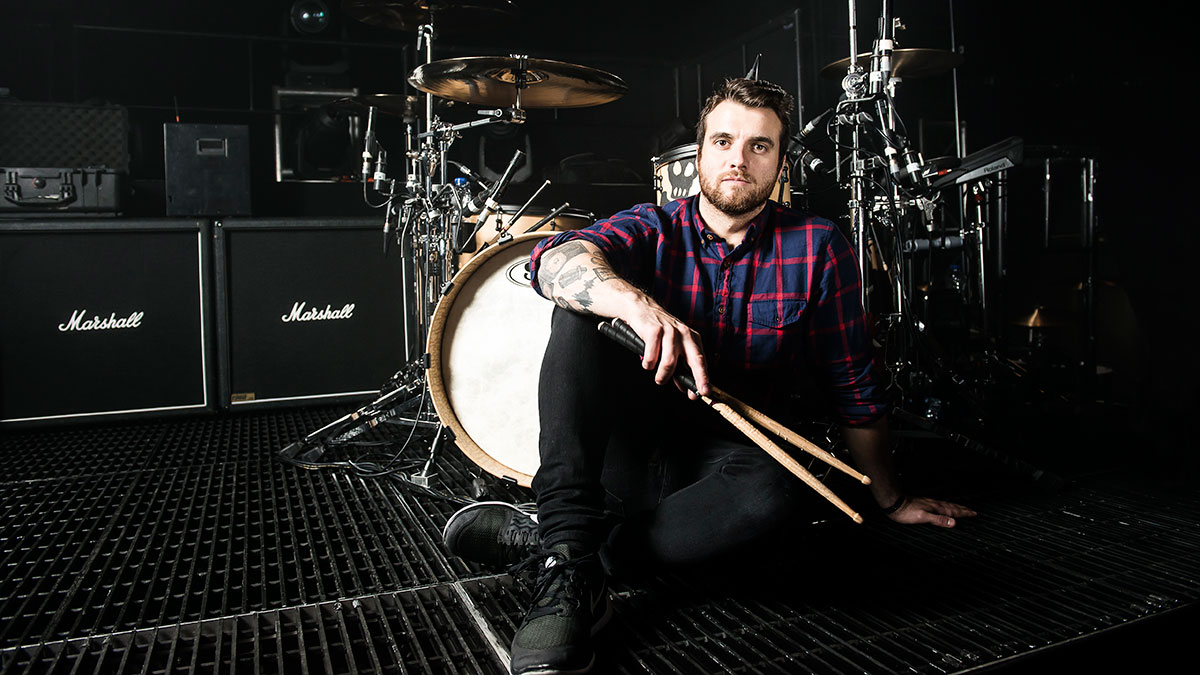
Know when to shine
“I think that a big part of it is staying in the background, doing your job and shining only in certain moments of certain songs. A lot of pop-punk is 180 to 200bpm. you don’t have a lot of room to breathe.
“You can’t do these long-winded, ghost-notey fills. When you’re playing your songs and you have one bar for your fill, it’s got to be nice and quick, tight.
“You choose your moments then it’s right back into it. Travis is great at that. He’s great at those little fills. People that aren’t musicians can’t hear drums, they don’t know what they’re doing, but they can hear a fill.”
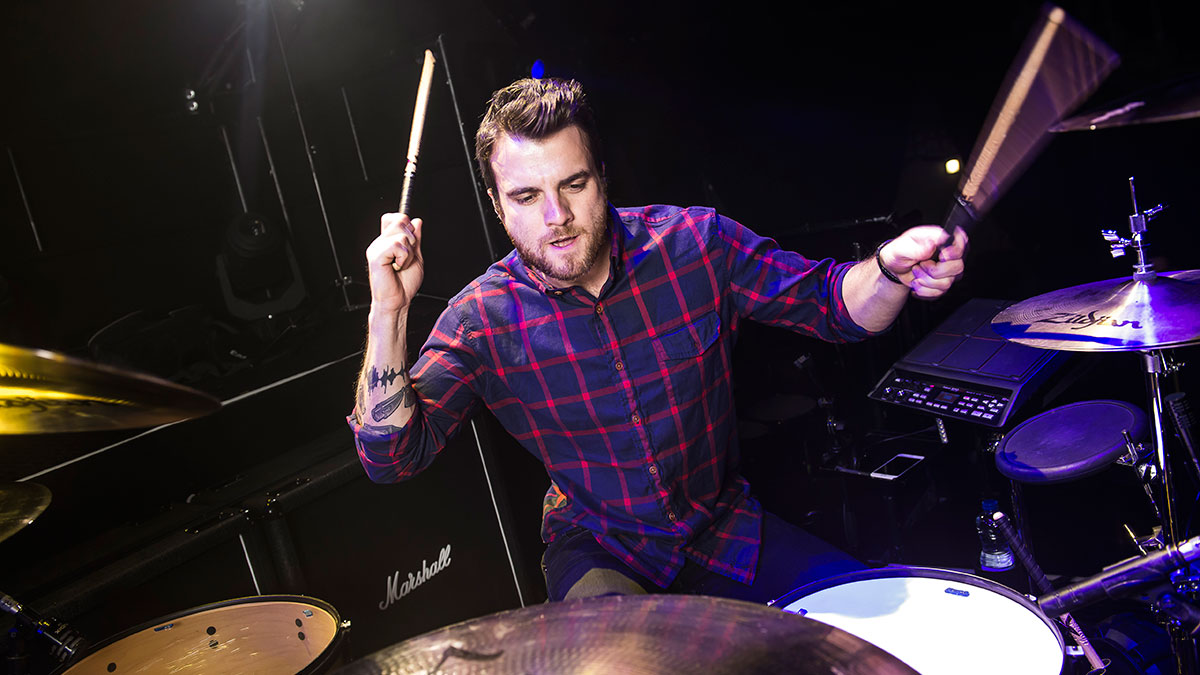
Befriend the click
“I remember when we started playing to a click track. It was 10th or 11th grade. We were about 16.
“I remember being so against it to the other guys, like, ‘We’re a rock band, we’re not supposed to be doing that. The Foo Fighters don’t do that, Zeppelin didn’t do that.’
“The first time we ever recorded was a four-song EP. We go in and the producer Paul Leavitt says, ‘You ever played to a click before?’ I said no but it’s fine, we’ll figure it out. It took me two and a half weeks to record four songs. It was eye-opening. That kind of thing, disciplining myself, I think was my biggest hurdle.”
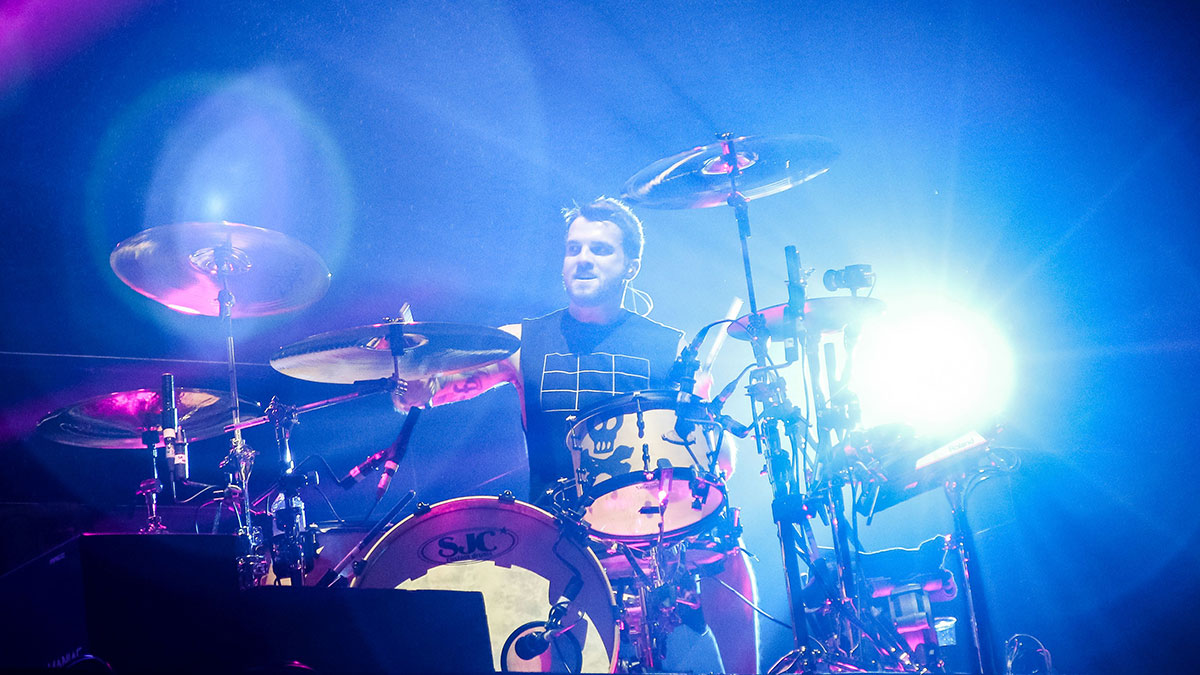
Get energised
“I think a big correlation between a lot of pop-punk drummers is energy live. That runs through to the recordings too.
“You can program drums all day, but there’s nothing like the energy of a pop-punk drummer. I think the ability to play faster tempos on a single kick is important too. A lot of drummers these days are kind of cheating the punk beat on a double kick pedal. I grew up on Travis Barker! It’s a lot of those quick doubles on a single kick, a lot of 16th-note fills. high and flat cymbals too, ha!”
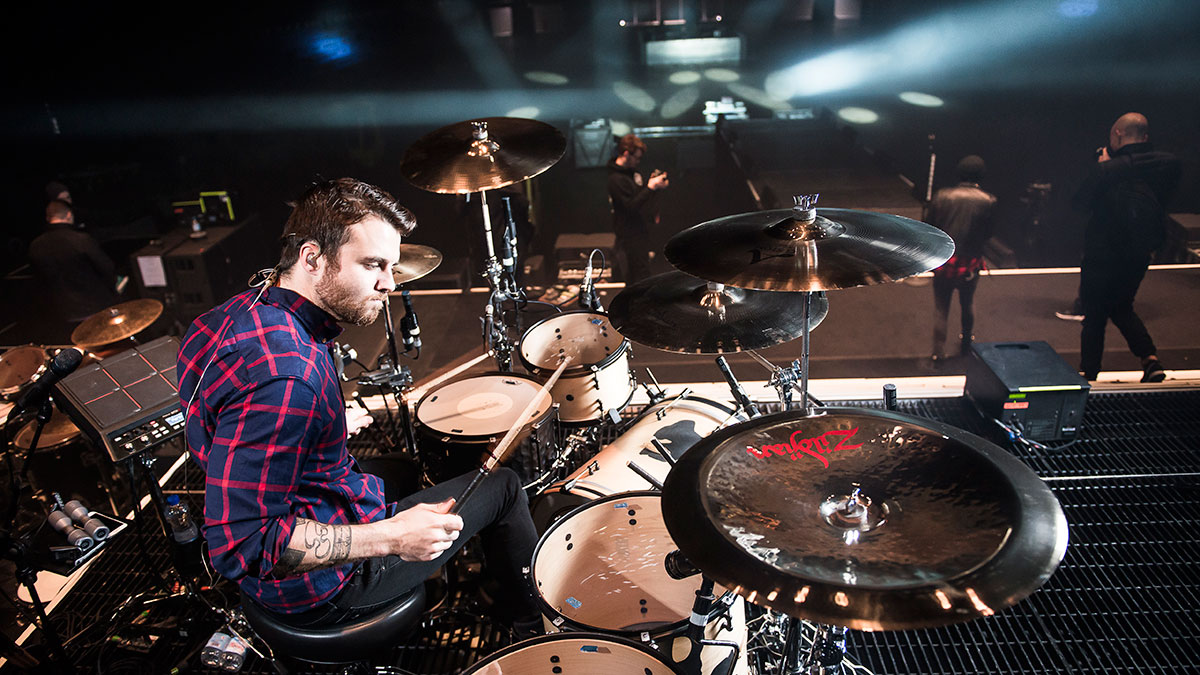
Learn the tricks of the trade
“My foot speed was a big issue because I started playing with a double kick. This was when I was 13 or 14. Of course I had 14 cymbals and 10 toms too!
“I realised that when I would do 16ths, even at slower tempos, I would always do it with two feet. That wasn’t good, I was being lazy. I scrapped the kick and I would start at 110bpm and just do four on the floor, then switch the kick to eighths, then do that for three minutes, then jump 5bpm. If I couldn’t do that I’d jump back by 2bpm. I’d do the same with the hands.
“Marching band helped so much with that. Just getting a steady double-stroke roll into a single-stroke roll. Working on wrist control. So much goes into it.
“One of the bigger things I learned from the Set Your Goals drummer [Mike Ambrose] was being able to use your fingers instead of arm or wrist. He would do these really fast 32nd-note rolls and his wrists would just be straight. He was using his fingers.
“There are so many techniques you can learn. Once again, it’s the boring stuff that can really help you. We’re playing up to two hours. If I was to be all arm or wrists I’d be torched. You’ve gotta learn the tricks of the trade.”
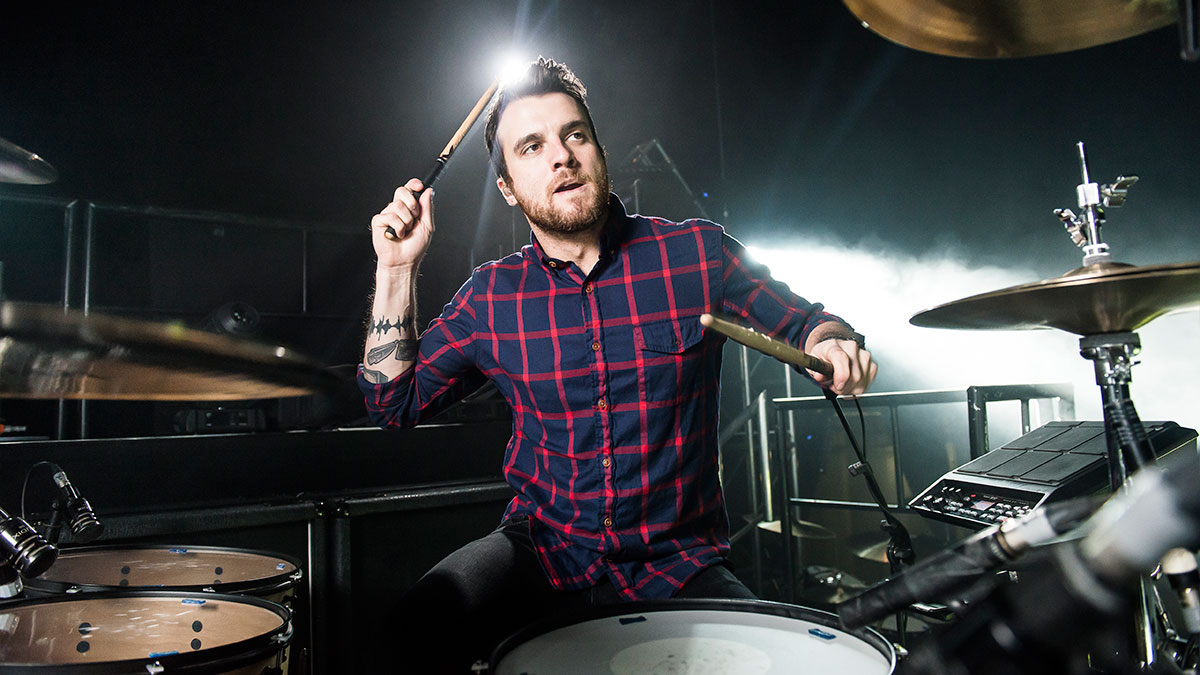
Broaden your horizons
“When I started playing on a full drum kit I got really into that and loved it, so I joined jazz band. I started listening to rock bands at the same time.
“Pretty much every rock drummer said it’s important to learn other aspects of drumming, it’s not all about the two and four so I got into some other stuff like jazz, Miles Davis, John Coltrane, trying to figure out what the hell was happening there.
“That’s about the time I started my first band. It was bad, very bad. At the time I was playing Nirvana and Collective Soul covers. Then High School came around, and around that time I got really into Blink-182, Foo Fighters and Nirvana.”
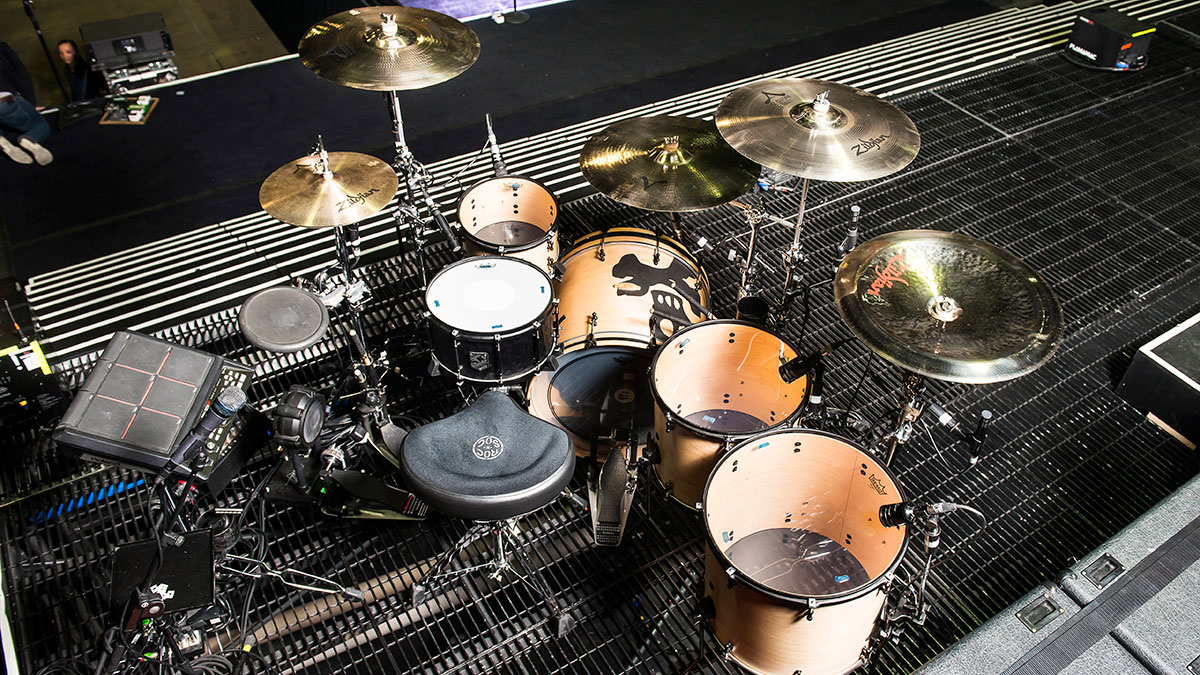
Get the right gear
“Bright cymbals [are perfect for pop punk]. [so is a] pretty high-tuned snare. My first custom snare was 25 plies, 5" deep and vented. It was so loud. I need a really bright clean sound because you really don’t have a lot of time for those tones to breathe.
“You’ve gotta get to that next snare hit and if you still have overtone from the snare hit before it’s gonna be a bunch of mud.
“For the recording sound I use smaller cymbals as you don’t want too much decay. There’s a lot of crashing on the ride. I don’t use my ride for ping hardly ever. I use between 18" and 20" crash cymbals, a 21" ride, a little bit of china every now and then.”

I'm MusicRadar's eCommerce Editor. In addition to testing the latest music gear, with a particular focus on electronic drums, it's my job to manage the 300+ buyer's guides on MusicRadar and help musicians find the right gear for them at the best prices. I dabble with guitar, but my main instrument is the drums, which I have been playing for 24 years. I've been a part of the music gear industry for 20 years, including 7 years as Editor of the UK's best-selling drum magazine Rhythm, and 5 years as a freelance music writer, during which time I worked with the world's biggest instrument brands including Roland, Boss, Laney and Natal.
“I’m sorry I ruined your song!”: Mike Portnoy hears Taylor Swift's Shake It Off for the first time and plays along... with surprising results
“Nile's riff on Get Lucky is a classic example of a funk riff, where the second of each 16th-note duplet is slightly delayed”: Locking down the theory of groove
“I’m sorry I ruined your song!”: Mike Portnoy hears Taylor Swift's Shake It Off for the first time and plays along... with surprising results
“Nile's riff on Get Lucky is a classic example of a funk riff, where the second of each 16th-note duplet is slightly delayed”: Locking down the theory of groove









